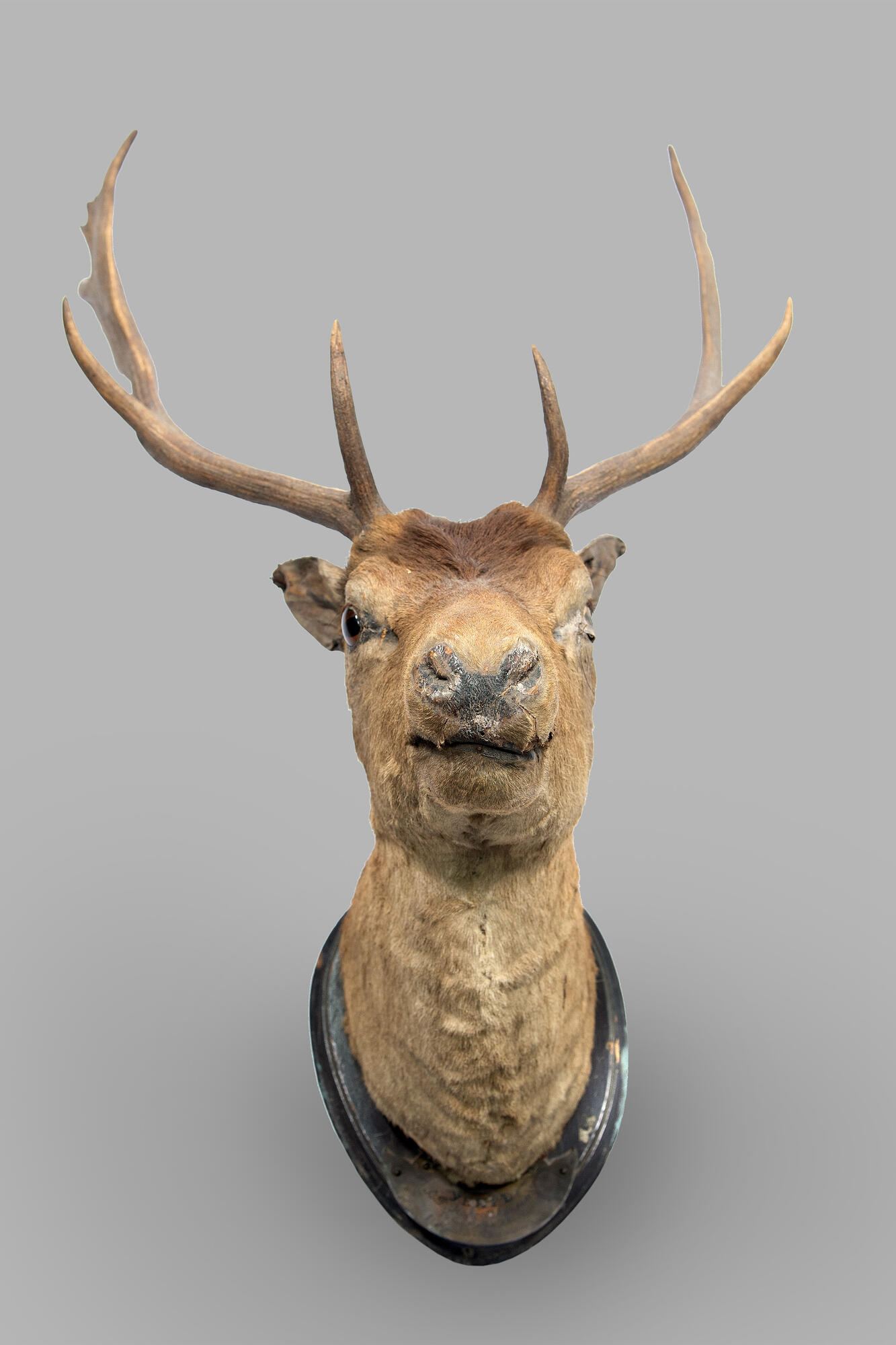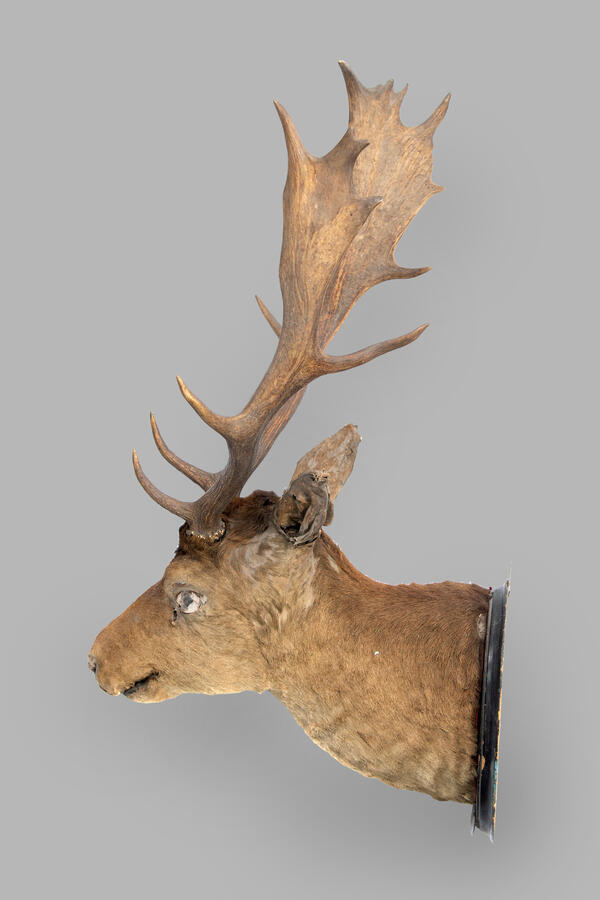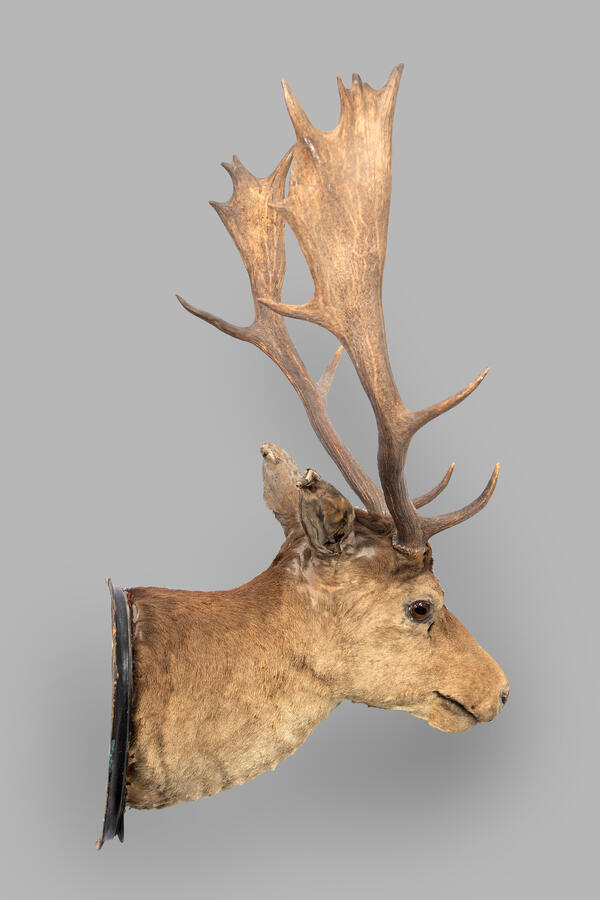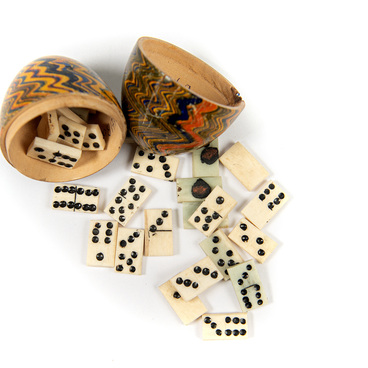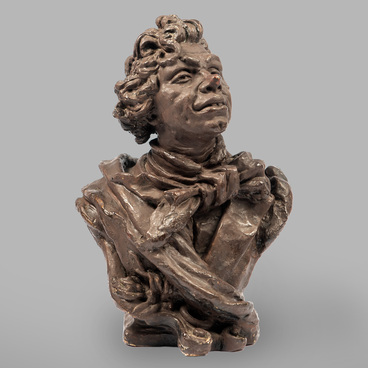There are several hunting trophies preserved in the collection of the Kirsanov Local History Museum. One of them is a head of a fallow deer killed during a hunt in 1887 by A. D. Naryshkin. It is not known for certain who was the Naryshkin who shot the deer. However, among the close relatives of Maria Konstantinovna Obolenskaya (née Naryshkina), there is only one fitting person — her nephew Alexander Dmitrievich Naryshkin, who at the time was eight years old. Whether an eight-year-old boy could have shot a fallow deer is a question for hunters. However, it is believed to be possible given the kind of hunting arrangements that were in place at a noble estate at the time.
Dmitry Konstantinovich Naryshkin, Alexander Naryshkin’s father and Maria Obolenskaya’s brother, is the author of “Elk Hunting”, a rare collector’s book which is still considered to be the best encyclopedia of elk hunting to this day.
The memoirs of Mikhail Andreevich Boratynsky, a nephew of the poet Yevgeny Abramovich Boratynsky, who lived with his family at his ancestral manor Ilyinovka, offer a glimpse into hunting in Kirsanov District of Tambov Governorate. Mikhail Boratynsky wrote that for many landowners the prey was not the main aim of the hunt. The process itself, its beauty, and the contest of skill and intelligence between the man, his dogs, and the wild beast were more important. This was the perception of hunting by Mikhail Andreevich’s grandfather, Admiral Ilya Andreevich Boratynsky (the poet Yevegeny Boratynsky’s uncle), after whom the Kirsanov estate Ilyinovka was named.
There was nothing like chasing a wild animal and preparing for a hunt, which was a special ritual: testing weapons, sharing experiences, recounting past adventures and anticipating new ones. For the participants, hunting was not only a blood-stirring passion, but also a kind of poetry that satisfied the subtlest aesthetic needs of the soul. It is no coincidence that many composers, poets and artists were inspired by it, creating works of world-renowned artworks.
Hunting was a favorite hobby of the nobility in pre-revolutionary Russia. It was also widespread in Tambov Governorate, rich in black soil, where the estates of many prominent families were located: the Naryshkins, Obolenskys and Chicherins. It is known that Maria Konstantinovna Obolenskaya was a passionate fan of hunting. It was from her estate that the head of a fallow deer came to the Kirsanov Local History Museum.
Dmitry Konstantinovich Naryshkin, Alexander Naryshkin’s father and Maria Obolenskaya’s brother, is the author of “Elk Hunting”, a rare collector’s book which is still considered to be the best encyclopedia of elk hunting to this day.
The memoirs of Mikhail Andreevich Boratynsky, a nephew of the poet Yevgeny Abramovich Boratynsky, who lived with his family at his ancestral manor Ilyinovka, offer a glimpse into hunting in Kirsanov District of Tambov Governorate. Mikhail Boratynsky wrote that for many landowners the prey was not the main aim of the hunt. The process itself, its beauty, and the contest of skill and intelligence between the man, his dogs, and the wild beast were more important. This was the perception of hunting by Mikhail Andreevich’s grandfather, Admiral Ilya Andreevich Boratynsky (the poet Yevegeny Boratynsky’s uncle), after whom the Kirsanov estate Ilyinovka was named.
There was nothing like chasing a wild animal and preparing for a hunt, which was a special ritual: testing weapons, sharing experiences, recounting past adventures and anticipating new ones. For the participants, hunting was not only a blood-stirring passion, but also a kind of poetry that satisfied the subtlest aesthetic needs of the soul. It is no coincidence that many composers, poets and artists were inspired by it, creating works of world-renowned artworks.
Hunting was a favorite hobby of the nobility in pre-revolutionary Russia. It was also widespread in Tambov Governorate, rich in black soil, where the estates of many prominent families were located: the Naryshkins, Obolenskys and Chicherins. It is known that Maria Konstantinovna Obolenskaya was a passionate fan of hunting. It was from her estate that the head of a fallow deer came to the Kirsanov Local History Museum.
